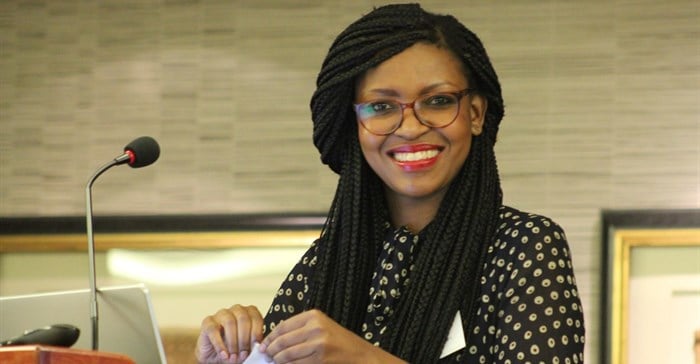#BrandManagerMonth: Mokebe Thulo on marketing to millennials

When asked what makes millennials talk about a brand, 80% of teens (aged 13 to 18), 79% of young adults (19-24) and 73% of kids (aged 8 to 12) say face-to-face engagement. “Josh says: ‘I like face to face because it proves they’re going out to try to get their brand in the open and to interact with their clients.’ And I think that’s the crux of it … Young people want meaningful engagement. Young people want to feel like they matter, and they want to feel like brands are actually making an effort to speak to them,” explains Thulo.
HDI Youth Marketeers specialises in understanding what it is that makes young people tick. Before explaining what separates these three groups from each other, when it comes to brands, Thulo says: “We believe you cannot paint all young people with the same paintbrush.” Kids seek fun and entertaining brands, she says. Because self-expression is very important to teens, they seek image enhancing brands. And young adults are attracted to any brands that will help them out with achieving their dreams and aspirations.
Why do millennials matter?
According to Thulo, South Africa currently has 26.7 million people under the age of 24 and this number is going to double by 2045. What’s also interesting to marketers targeting youngsters is that direct youth spend in 2015 alone came to over R120 billion, she says.
What do they spend their pocket money on?
Clothing is top of the list, not only as a necessity, but as a form of self-expression.
Education comes in second, which is representative of what’s happening in the country at present. “It speaks to how seriously young people take education and campaigns such as #FeesMustFall. It also gets us to understand a little bit more of what’s happening in our institutions of higher learning at the moment,” she adds.
Gaming is moving up in terms of spending. “So a lot of people think that gaming is a weird habit - or one of those anti-social things young people who have no friends spend too much time doing, but that’s actually not the situation in 2016.” These people are now meeting and engaging with other gamers, creating communities around these traditionally one-on-one platforms. “And not only that,” says Thulo, “it’s been found that gaming - or participating in gaming - actually teaches these young people skills, such as multitasking and skills on formulating strategy, which are things that employers haven’t recognised before. Seventy-eight percent of young people under the age of 24 admitted to playing TV games a few times a month and a quarter of them admitted to playing TV games every single day. So maybe not such a bad thing?”
As SA is a commuter-dependent society, transport is also up there. “And, of course, we wouldn’t be talking about young people if fast food wasn’t one of their spending points.”
So how do brands do it?
This is twofold – there’s a how to and a how not to.
You need to make your young people feel like VIPs, especially kids. They like being made to feel important. Also make sure your product is easily accessible and affordable.
How not to do it is by making false promises. “Young people cannot stand a brand that lies to them, and because they have so many options at their fingertips in terms of how to spread the word, that’s exactly what they’ll do - they’ll tell their friends, their friend’s friends, their friend’s uncle, their friend’s dog and whoever else … ” Don’t be too pushy. They don’t want to be told what to do or be talked at. “They want you to engage with them, and that’s why millennials are looked at as prosumers instead of consumers.”
Bad service is also a no-no. “You think because people are young, they don’t know much about bad service and what they deserve.” This is absolutely not true. “And there’s nothing worse than a brand that tries too hard to be cool. *Cringe*
Six tips for marketers
Here’s what to do with all this insight:
- Ignore pester power at your peril: This isn’t limited to the kid in the sweet aisle crying to mummy for sweets. “Youths have a huge influence on the household purse.” So if you would like to have a bit more of that spend coming to your brand or product, speaking to youths is a good place to start. Something to keep in mind when formulating strategy …
- Play in their playground: Some marketers are afraid of this typically digital space, whereas others are too eager to get involved. “For example, some people cannot stand pop-up adverts. They do want to get with your brand, but on their terms and not necessarily yours,” explains Thulo.
- Do good and win respect: “Young people believe in brands that believe in communities, so if you invest in communities, they will invest in your brands.” And this is not a one-off thing, it has to be a continuous effort. The brand needs to show that it’s in it to win it and that it’s invested.
- Listen before you leap: Do your research. Millennials are constantly adapting and changing, “but the good news is that they are more than willing to give us their opinions”.
- Talk with them not at them: “They’re more than willing to engage with you, listen to what you might have to say, but it has to be a conversation – talking to them vs at them.”
- You are you, be true: “Be you as a brand. You need to be an authentic, honest brand.” As mentioned, there’s nothing worse than a brand that pretends to be what it’s not, and young people, funnily enough, are the first to see straight though this.



























